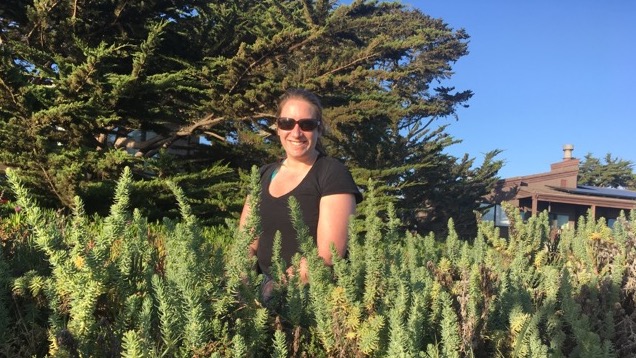
M.S. Candidate, San Francisco State University
Seneca Award/Field Travel Grant
The reproductive life history of endangered Suaeda californica and its use in sea level rise adaptation in San Francisco Bay
“Over 90% of the salt marshes in the San Francisco Estuary (SFE) have been damaged or destroyed and in general, the diversity of salt marsh vegetation in the SFE has decreased over the past 50 years. Some salt marsh plant species are now quite rare, and will require active revegetation to insure both their presence and their functions. My thesis focuses on the endangered Suaeda californica, a salt-tolerant, succulent coastal wetland shrub that occurs in a narrow high tide zone along sandy salt marsh edges or estuarine beaches. The original native SFE population became completely extirpated around 1960. Plant material from Morro Bay was used to propagate and reintroduce juvenile S. californica to San Francisco Bay in 1999, and roughly 30 total plants have survived until now in three locations. As these low numbers hardly represent a restored population of S. californica, and the plants have not successfully self-recruited from seed, a reintroduction plan was developed.
The objectives of this project are to 1) evaluate the phenology of S. californica and answer questions related to the flowering period, fruiting, and seed production; 2) understand the effects of sediment grain size and organic matter on the germination and growth of S. californica; 3) determine the effects of experimental arboring of S. californica growth; and 4) explore the effects of arbors on providing high tide refuge for birds and mammals.”
